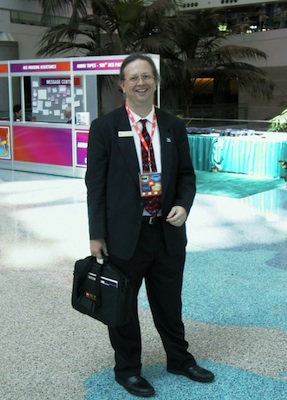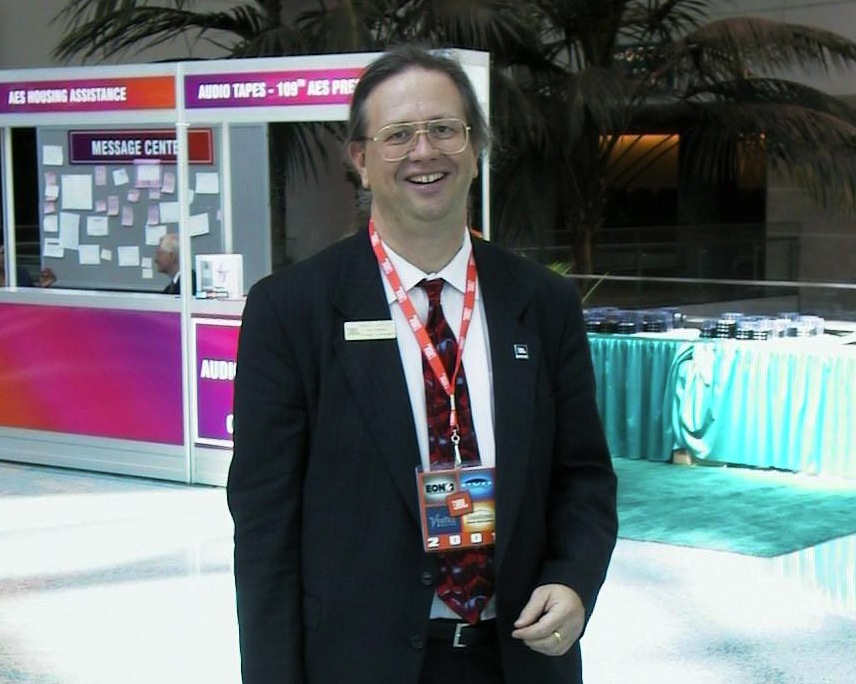This is Part 2 of a three-part interview. Part 1|Part 3.

SCN: How does the title "Director of Technology" differ today from what it might have been when you started your career with Harman in 1976?
MG: I think the corporation Harman overall, as well as Harman Professional and JBL Professional, have more of a focus on the intellectual property part of this because it's such a fast-paced and connected worldwide marketplace in terms of being able to be aware of what other people are doing, what other developments are happening, both in the industry and outside the industry that might be applied to our industry, like those aerospace materials being adapted to the audio marketplace. So things move much more quickly, the corporation is much more interested in generating unique solutions, proprietary solutions that give us a competitive edge, and protecting those solutions.
But the actual methods are the really sort of the same as when I joined in the 1970s, and even the same as when Lansing founded the company. It is finding out whatever you can about materials, developing those materials and processes and applying them to make a better loudspeaker. In that sense it's a similar challenge, it’s just there’s so much more information available, and easily applicable, but then once you have the information and you come up with an idea or concept, you still have to invest the hard work, and do the modeling and prototyping and see if it's going to pan out—if it’s going to allow you to create something that has an improved performance or benefit.
SCN: How has that process changed?
MG: Back when I joined in the 1970s, I wanted to apprentice with the guys who had built JBL after Lansing passed away. They used analog computers to do their modeling in the 1950s and 1960s. When I started in the 1970s, we were using Fortran computers on a remote link on a phone modem to do loudspeaker component and enclosure modeling. Then obviously by the 1980s, everybody had a desktop PC that was hugely more powerful, and now we not only have those computer capabilities, but incredible capabilities on the internet and from the cloud to both access information about what other people are doing and to bring that computer and processing power to solving the equations. So the rate of information and the flow of ideas are hugely increased.
But the process of applying those ideas does still come down to people with knowledge and insight and the spark of the idea, to bring together other ideas or available concepts and turn it into a reality. Turn it into something that can then be produced and sent around the world and allow people in every geographical location to buy that product and benefit from that improvement, in terms of better sound and ease of providing that better sound.
SCN: That’s very egalitarian.
MG: Well, that’s another personal perspective. When I went to college and got an undergraduate degree, it was an arts and sciences degree, but they let me call it audio technology. I took courses from the school of music, the school of engineering, and the physics department. I took audiology courses, I took courses about the physiology of hearing, so I had a very broad liberal education but with applied sciences, so they actually let me get a BS degree because there was enough science in it.
Then I worked for a year in the studio and mostly on the road, lifting heavy objects, plugging in cables, mixing bands, and I knew I could do better than being a glorified roadie, so I went to a graduate school that had a specific program in audio and got a Master’s Degree in electrical engineering and then was offered different jobs at a number of different pro audio companies. I chose to go into loudspeakers instead of electronics, but I also said if I'm going to do loudspeakers, I am going to go to JBL and I want to apprentice. I want to study with these names that I’d heard, Bart Locanthi and Ed May, these are the guys who actually came up with the ideas and designed the loudspeakers for JBL in the 1950s and the 1960s.
The concept of being an apprentice, being the humble student, being able to study with other people that know how to do it—again it comes down to people who sort through the ideas, however many they are, and come up with the unique perspective and then put in the time and the work and the sweat to make the prototypes, to see if it does in fact work, and then turn it into a product.
That apprenticing and studying with people who have gone before, whether you’re reading it in a book, or ideally, actually working under or with those people that have gone before you, is a key element to understanding that work is done by people, and products are made by people with unique perspectives and unique personalities. The audio business in particular is full of lots of unique personalities that combine interest in music, sound, and electronics, and that apprenticeship concept, or studying at the foot of the master concept is very crucial to my psychological approach to what I hope I’ve achieved over these many years at JBL.
SCN: In today's commercial sound marketplace, how much does innovation apply and how much product development is vertical market driven?
MG: I think they're both fully active. A new DSP box that allows a different or better level of matrix mixing or distribution of signals needs to be combined with mundane ceiling speakers or paging horns and the amplifiers that drive them to create a communication system.
People want solutions. Part of the solution is having the products available, having them in stock, and having all of the elements that are necessary. You need a mic, mixer, amp, and a speaker, and in the example I was giving, the digital processing may be the unique and differentiating point, but the system still has to have all those elements, and some of those elements may not need to have unique capabilities.
We have ceiling speakers that use same kind of RBI waveguide technology that’s in VerTec and VTX line arrays, but it’s applied to a ceiling speaker to give very uniform coverage. Sometimes you don't need that, and you can get away with a simple eight-inch ceiling speaker and a baffle. Again, it's the right solution for the job at hand, but it's also the appropriate combination of innovation and availability.
Innovation goes hand in hand with the practicality and functionality of being able to provide a complete system solution. That’s what been so satisfying to be not just part of JBL but part of Harman, where we’re creating new solutions like the IDX digital system for communication in airports and transportation environments.
Kirsten Nelson is the editor of Systems Contractor News.
